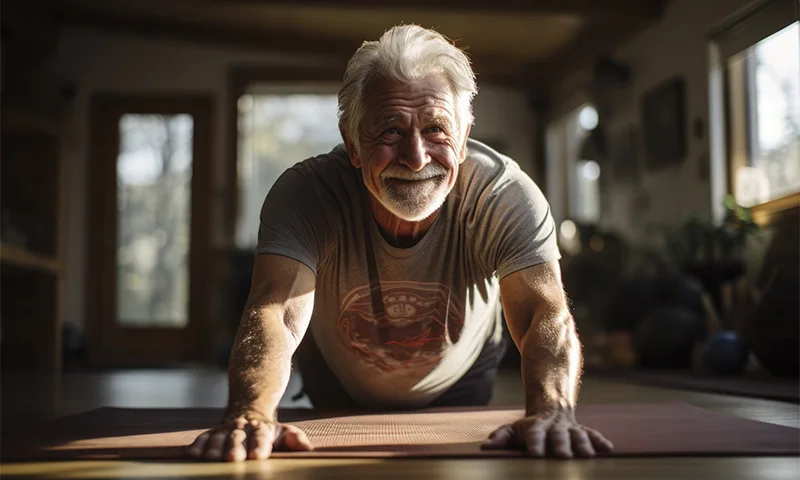Fitness for Life: Fun and Effective Workouts for All Ages
Everybody, regardless of age, must keep a healthy lifestyle through regular physical activity. Regular exercise is beneficial to both the body and mind as it helps to prevent major illnesses and increases longevity. If you customize your training for specific age brackets you find that everyone has something to do that is both enjoyable and productive. Here are some enjoyable workout ideas that can be used by people of any age.
Children (Ages 5-12)
In order for kids to love physical activity throughout their life, it’s important that participation in exercises is enjoyable and fascinating from the beginning. The focus of play-based activities should be on improving general movement abilities.
Playground Play:
Playgrounds have a range of structures that encourage climbing, swinging and balancing. Such activities are important in boosting strength, coordination and flexibility.
Sports and Games:
Organized games such as football, basketball, and swimming help to improve cooperation and physical abilities. Breathe enough air into your lungs when you play simple games like tag, hopscotch or jump rope since they are good for your heart.
Dance Parties:
There is nothing like turning on some music and dancing to get kids into the action. This is an enjoyable method of enhancing cardiovascular health and coordination while still allowing a space for creativity.
Teenagers (Ages 13-19)
Structured and varied exercise routines can benefit teenagers. When they like the activity, they will always want to do it.
Team Sports:
Engaging in group sports such as volleyball, basketball or track and field aides the youth to develop social aptitude, self-discipline and physical well-being.
Strength Training:
Combining strength training with push-ups, pull-ups as well as squats that use their own weight will promote better muscle endurance and strength. You can incorporate resistance bands, or just some small weights for variety and to make the exercise tougher.
Fitness Classes:
A lot of health clubs and community centers have fitness classes aimed at teenagers like Yoga, pilates or dance fit. These activities provide organized workout sessions and also a socializing avenue.
Adults (Ages 20-64)
Adults need to develop a strategy for maintaining good general fitness levels by engaging in different types of physical activities which help to avert chronic illnesses and cope with stress.
Cardiovascular Exercise:
Running, biking, swimming and jogging fast are great ways of improving heart health and losing weight. Try to achieve 150 minutes every week at least of moderate intensity cardio activity.
Strength Training:
Weightlifting or resistance training should be included at least twice per week. To increase muscle mass, bone density and metabolic rate, concentrate on the major muscle groups.
Flexibility and Balance:
Some practises, for instance yoga and Pilates can enhance flexibility, balance and core strength. These not only reduce stress but also promote mental clarity.
Seniors (Ages 65 and Older)
Exercise helps seniors continue being independent, avoid getting hurt when they fall and get better emotional health status. It is crucial selecting non-intense workouts that adapt to their body limitations.
Walking:
An effective and simple means of remaining active for seniors is walking. Cardiovascular health is improved, muscles become stronger, and one’s mood is elevated.
Water Aerobics:
When seniors exercise in water, its impact on the joints and muscles reduces. Therefore, it is a perfect alternative for them. Usually, water aerobics classes consist of strength-building, flexibility-enhancing, and cardiovascular workouts.
Tai Chi:
Tai Chi is a soft type of movement that encourages coordination, suppleness, and assurance. It offers specific advantages for falling less and generally feeling better.
Resistance Training:
For seniors to keep their muscles strong and their bones healthy light weights or resistance bands are vital. Concentrate on exercises that improve daily functional motions.
Creating a Routine for All Ages
It doesn’t matter if you’re young or old; it’s always important to include cardiovascular, strength, flexibility and balance exercises into your daily regimen. The following are some pointers on how to come up with an even exercise program:
Set Realistic Goals:
Set realistic fitness objectives according to where you stand now in relation to them and what your future expectations might be. Modify these objectives as you develop.
Stay Consistent:
To achieve outcomes, the principle of uniformity should be adhered to. Make it a point to work out often and include some form of physical exercise in everything you do each day.
Listen to Your Body:
Take note of what your body feels like while exercising or afterwards. Rest until you have fully recovered and don’t force yourself through hurt or other sensations that are unpleasant.
Stay Hydrated and Eat Well:
Workouts need proper nutrition and hydration that can help them recover after these exercises. You should eat a balanced meal with lots of fruits, vegetables, low-fat meat, and whole grains.
Seek Professional Guidance:
Think about cooperating with a fitness expert to develop a unique exercise regime that is tailored to your demands and objectives.
Conclusion
To keep yourself healthy every day, it is important to remain active throughout your lifetime. Being physically fit has many advantages if one selects an appropriate level of exercises as well as a proper diet for all ages. No matter the age group be it a kid or an adult, there is always an affordable exercise course available to them.











